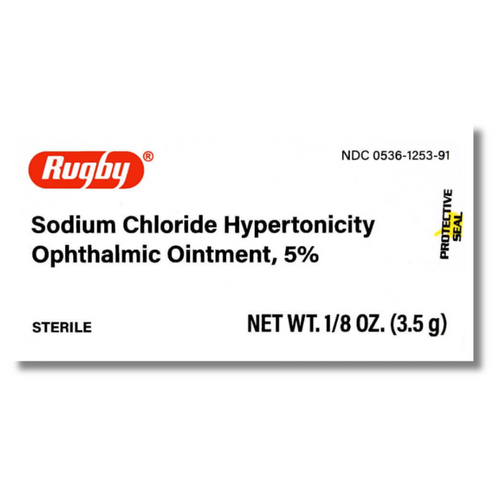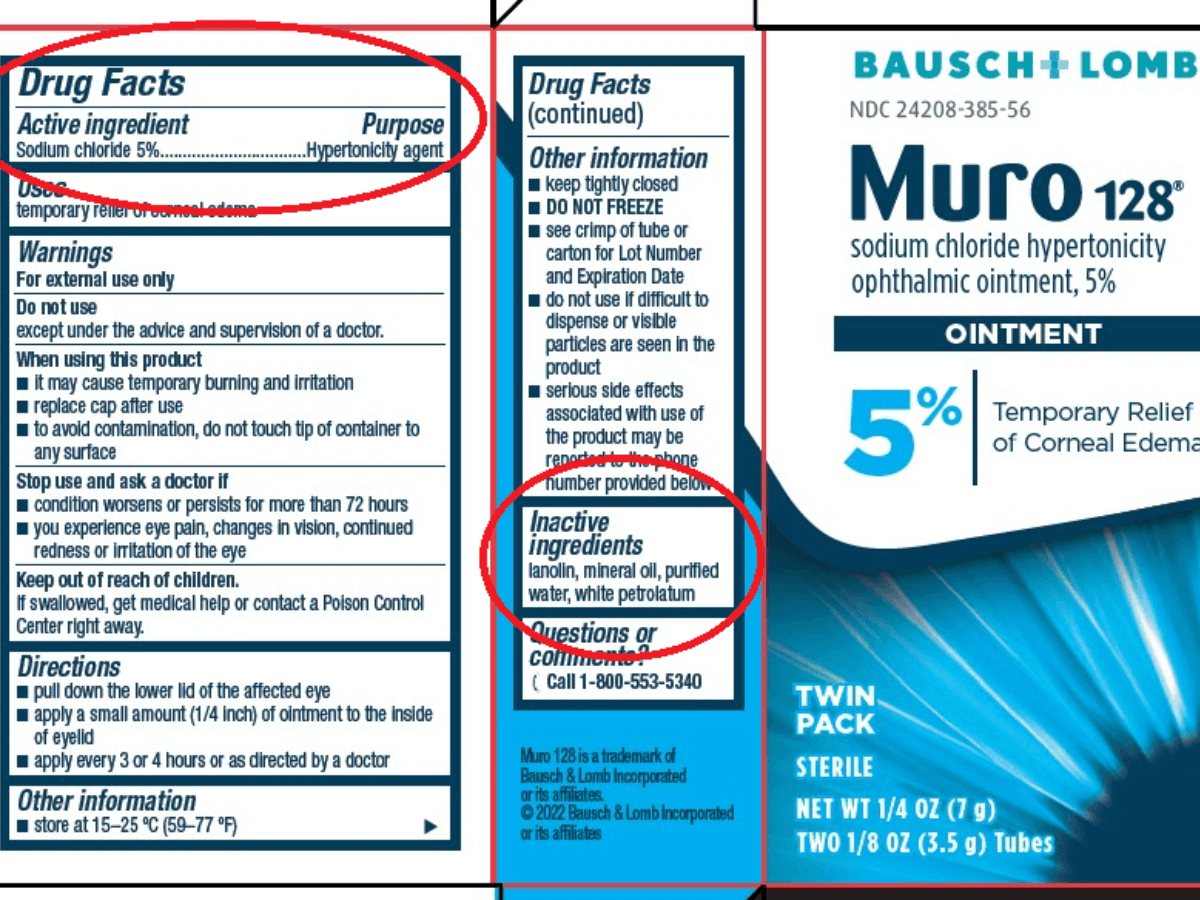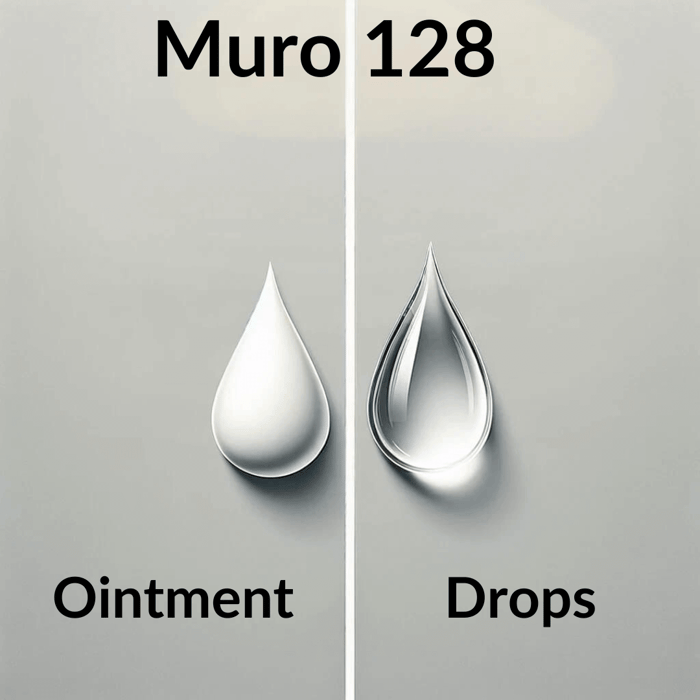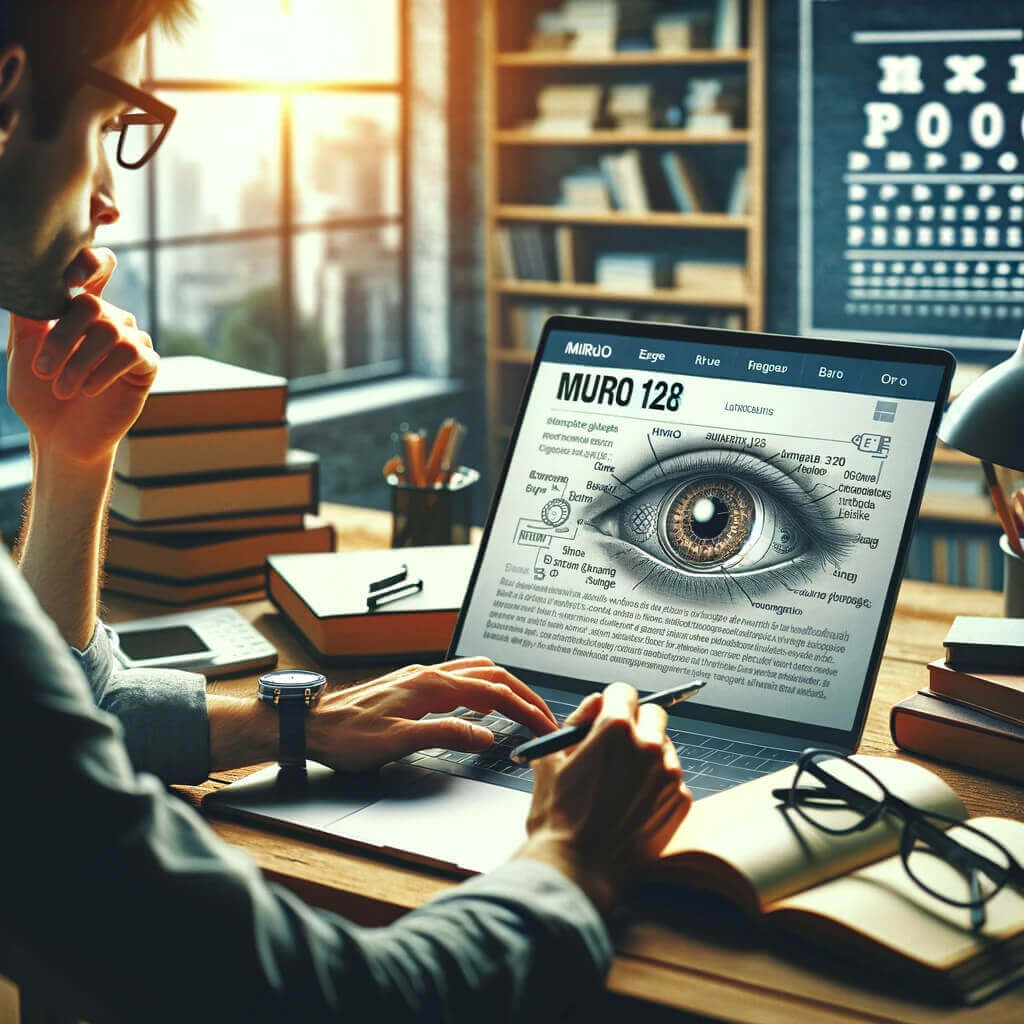
Muro 128 for Corneal Edema: Questions & Answers
Table of Contents
- What are the benefits of using sodium chloride ophthalmic ointment for corneal edema?
- What is Muro 128 used for?
- What’s the difference between Muro 128 ointment and drops?
- Can you use Muro 128 every day?
- What are the potential side effects of Muro 128?
- Does Muro 128 help with dry eyes?
- What can I do at home to get relief from corneal edema?
- What’s another name for Muro 128 ointment and solution?
- How long can you use Muro 128 ointment?
- Is there a generic for Muro 128?
- What is the generic for Muro 128 ointment?
- Is sodium chloride the same as Muro 128?
- What happens if you use too much Muro 128?
- Does Muro 128 ointment help corneal abrasions?
- What eye drops are good for swollen corneas?
- How long does corneal edema take to go away?
- What helps bring down eye swelling?
- How do you treat corneal edema at home?
- Muro 128 for Corneal Edema: Final Thoughts
- Muro 128 for Corneal Edema: Related Products
- About xeteor.com
- FAQs
If you’ve recently had LASIK or are experiencing blurry vision and swelling in your eye, your doctor may have recommended Muro 128 for corneal edema. This condition can feel confusing — and uncomfortable — but the good news is that treatment is straightforward and effective when you use the right product.
What are the benefits of using sodium chloride ophthalmic ointment for corneal edema?
Sodium chloride 5% ophthalmic ointment — sold under brand names like Muro 128 — helps relieve corneal edema by gently drawing excess fluid out of the cornea. This reduces swelling, improves vision, and helps your eye heal faster.
Some of the key benefits include:
- Starts working within hours to reduce swelling
- Apply a small amount inside your lower eyelid
- Available over the counter
As always, speak to your eye care provider before starting any new treatment — especially if you have other medical conditions or take multiple eye medications.
What is Muro 128 used for?
Muro 128 is the brand name for a sodium chloride 5% ophthalmic ointment or solution, primarily used to treat conditions that cause fluid buildup in the cornea — most commonly, corneal edema.
As a hypertonic saline solution, Muro 128 works by pulling excess fluid out of the cornea, reducing swelling and pressure, and improving symptoms like blurry vision, eye discomfort, and light sensitivity.
Main uses of Muro 128 include:
- Corneal edema: A common condition where fluid builds up in the cornea due to surgery, injury, or disease. Muro 128 helps reduce the swelling and restore clarity.
- Fuchs' dystrophy: A degenerative condition that leads to corneal edema over time. Muro 128 is often used to manage this swelling before or after surgery.
Muro 128 is available in 2% and 5% strengths, and comes in both ointment and drop formulations. Most patients use the 5% version, which is also available in generic forms like Rugby Sodium Chloride Ointment.
Always follow your healthcare provider’s instructions when using Muro 128 or its generics, and consult your doctor if you're unsure which strength or format is best for your needs.
What’s the difference between Muro 128 ointment and drops?
Both Muro 128 ointment and solution contain 5% sodium chloride and are used to treat corneal edema, but they differ in how they’re applied and how long they last.
Muro 128 Ointment (5%)
- Thicker, gel-like consistency
- Typically applied inside the lower eyelid
- Melts slowly, offering longer-lasting relief — great for overnight use
Muro 128 Drops (5%)
- Liquid solution applied directly into the eye
- Faster acting but may need more frequent application
- Often used during the day for quick relief
Many eye doctors recommend using the drops during the day and the ointment at night for continuous corneal protection. Both are available in brand-name and generic versions like Rugby.
Can you use Muro 128 every day?
Yes, daily use of Muro 128 for corneal edema is common — but should always be done under your doctor’s supervision. For chronic swelling, long-term management may include regular use of the ointment at bedtime and drops throughout the day.
Typical dosing:
- Apply a small amount of ointment once or twice daily
- Use drops up to 4 times daily, as directed
Always follow your eye care provider’s specific instructions, especially if you have other eye conditions or take additional medications.
What are the potential side effects of Muro 128?
Muro 128 for corneal edema is generally well-tolerated, but some users may experience mild, temporary side effects. These typically resolve on their own and do not require medical treatment.
Common side effects may include:
- Stinging or burning sensation when applied
- Temporary blurred vision
- Eye irritation or redness
- Increased sensitivity to light (photophobia)
- Dryness or discomfort
If symptoms persist or worsen, or if you experience unusual reactions, consult your eye care provider promptly.
Does Muro 128 help with dry eyes?
No — Muro 128 is not intended to treat dry eyes. Its main use is to reduce corneal swelling, not to add moisture to the eye. While the ointment form may feel lubricating, it is not designed to support tear film or long-term hydration.
If you're dealing with dry eyes, your provider may recommend:
- Preservative-free artificial tears
- Gel-based lubricants or ointments specifically for dry eye
- Prescription eye drops like cyclosporine (Restasis) or lifitegrast (Xiidra)
Talk to an eye care professional to find the most effective treatment for your specific symptoms.
What can I do at home to get relief from corneal edema?
While Muro 128 for corneal edema is often the most effective treatment, there are a few supportive steps you can take at home to ease symptoms between doctor visits:
- Use a cold compress: Helps reduce surface inflammation and discomfort
- Rest your eyes: Minimize screen time and avoid eye strain
- Stay hydrated: Proper fluid balance can support overall eye health
- Follow prescribed treatment: Use any ophthalmic ointments or drops exactly as directed
- Maintain hygiene: Wash hands before touching your eyes or applying medications
These remedies can offer temporary relief but are not a substitute for professional care. Be sure to follow your doctor’s advice for lasting results.
What’s another name for Muro 128 ointment and solution?
Muro 128 is the brand name for a sodium chloride-based eye medication. It comes in two forms:
- Muro 128 ointment: Also called sodium chloride ophthalmic ointment
- Muro 128 solution: Also called sodium chloride ophthalmic solution
Both products contain the same active ingredient — sodium chloride 5% — and are available in brand-name and generic forms like Rugby Sodium Chloride Ointment.
How long can you use Muro 128 ointment?
The length of time you use Muro 128 for corneal edema depends on the cause and severity of your condition. In general:
- Short-term use: Common after LASIK or minor corneal injuries — often for a few days to weeks
- Long-term use: May be required for chronic conditions like Fuchs’ dystrophy
Your eye doctor will determine how long you should use the ointment or drops and will adjust your treatment based on how your eyes respond.
Always follow the instructions on the packaging or from your healthcare provider. Never extend use without professional guidance.
Is there a generic for Muro 128?
Yes — the best generic alternatives to Muro 128 for corneal edema are:
- Rugby Sodium Chloride Hypertonicity Ophthalmic Ointment, 5%
- Rugby Sodium Chloride Hypertonicity Ophthalmic Solution, 5%
Both are manufactured by Bausch & Lomb — the same company behind the Muro 128 brand — and contain the exact same active and inactive ingredients. The only difference? The price.
We also break down comparisons in these related posts:
- Bausch & Lomb Muro 128 Drops vs Ointment
- CVS Brand vs Rugby Sodium Chloride Ointment
- Rugby Sodium Chloride Ointment: Why It's the Best Muro 128 Alternative
What is the generic for Muro 128 ointment?
Rugby Sodium Chloride Hypertonicity Ophthalmic Ointment, 5% is the most trusted generic. It’s clinically identical to Muro 128, just offered at a lower cost and backed by our 100-day satisfaction guarantee.
Is sodium chloride the same as Muro 128?
Not exactly. Sodium chloride is simply salt — a chemical compound (NaCl) used in many applications. Muro 128 is a specific branded ophthalmic product containing sodium chloride as its active ingredient in a 5% concentration, formulated to reduce corneal edema.
So while Muro 128 contains sodium chloride, it is not interchangeable with other salt-based solutions or uses. Stick with ophthalmic-labeled products like Muro 128 or its generics.
What happens if you use too much Muro 128?
Overusing Muro 128 for corneal edema can lead to side effects or unintended complications. Always use it exactly as directed.
Possible side effects from overuse include:
- Increased eye irritation or redness
- Excessive dryness or stinging
- Worsening swelling or inflammation
- Electrolyte imbalance in the eye
Follow dosage instructions on the label or from your doctor and reach out to an eye care provider if symptoms persist or worsen.
Does Muro 128 ointment help corneal abrasions?
Muro 128 is not a primary treatment for corneal abrasions (scratches on the surface of the eye). Its main purpose is to reduce swelling, not repair tissue.
If you suspect a corneal abrasion, your doctor may recommend:
- Lubricating eye drops or ointments: To soothe the surface and prevent dryness
- Antibiotic drops: To prevent infection while the eye heals
- Bandage contact lenses: Used to protect the eye and support healing
- Pain management: OTC or prescribed medication for discomfort
Only a licensed eye care professional can confirm if your condition is a scratch, swelling, or something else. Never self-treat a suspected corneal abrasion with Muro 128 without consulting your doctor first.
What eye drops are good for swollen corneas?
When treating a swollen cornea — also known as corneal edema — your doctor may recommend different types of eye drops depending on the cause. Muro 128 for corneal edema is the most commonly used hypertonic solution, but other options may also support healing and symptom relief.
Types of eye drops for corneal edema:
- Hypertonic saline drops (5% sodium chloride): These help draw excess fluid out of the cornea and are the first-line treatment for swelling.
- Steroid eye drops: Used for inflammation-related corneal edema — only under medical supervision due to side effects with long-term use.
- Lubricating eye drops: Artificial tears may improve comfort, but do not reduce corneal swelling directly.
- Preservative-free eye drops: Recommended for sensitive eyes or frequent use, reducing the risk of irritation.
Your doctor will determine the best treatment based on your underlying diagnosis, severity, and eye history.
How long does corneal edema take to go away?
Recovery time varies depending on what caused the swelling and how it’s treated:
- Mild cases: May resolve in a few days with proper care
- Post-surgical or trauma-related: Often improves within 1–2 weeks
- Chronic conditions (e.g. Fuchs’ dystrophy): May require ongoing management with ointments or surgical options
Factors that affect healing time:
- Cause of the edema (injury vs. disease)
- Treatment approach (drops, ointments, or surgery)
- Individual healing capacity (age, health, immune system)
Always follow up with your eye care provider if symptoms persist or worsen.
What helps bring down eye swelling?
Eye swelling may be caused by corneal edema, allergies, irritation, or injury. Here are general ways to reduce swelling:
- Cold compress: Apply to the eye for 10–15 minutes at a time to reduce inflammation
- Antihistamines: If due to allergies, try OTC antihistamine drops or tablets
- Lubricating drops: Help soothe dryness and reduce irritation-related swelling
- Avoid allergens: Keep windows closed, use air filters, and avoid rubbing your eyes
- Good eye hygiene: Wash hands before touching your face or applying medication
- Rest with head elevated: Helps reduce fluid retention around the eyes
If your eye swelling is persistent or accompanied by pain or vision changes, consult your eye doctor for an accurate diagnosis and tailored treatment.
How do you treat corneal edema at home?
While Muro 128 for corneal edema is the most common treatment, there are supportive steps you can take at home to help manage symptoms and support healing — especially between follow-ups with your eye doctor.
Home care tips for corneal edema:
- Use prescribed drops or ointments: Follow your provider’s instructions closely when using hypertonic saline products like Muro 128 or generics.
- Apply a cold compress: Helps reduce surface swelling and discomfort — 10 to 15 minutes at a time.
- Avoid eye strain: Limit screen time, reading, and other tasks that fatigue your eyes.
- Practice good eye hygiene: Wash hands before applying medication and avoid rubbing your eyes.
- Protect your eyes: If caused by injury, wear protective eyewear during activities that pose a risk.
- Stay hydrated and get rest: Drink plenty of water and aim for consistent sleep — both support eye recovery.
Note: These suggestions may help manage symptoms but are not a substitute for professional diagnosis. Always consult an eye care specialist for tailored treatment.
Muro 128 for Corneal Edema: Final Thoughts
We hope this guide has helped answer your questions about Muro 128 for corneal edema — from how it works to how long to use it and what generic options are available. While the condition can be frustrating, the right treatment makes a difference.
If you’re looking for the same relief at a lower cost, consider switching to Rugby Sodium Chloride Ointment, 5%. It’s manufactured by Bausch & Lomb (the makers of Muro 128) and contains the exact same ingredients — just without the brand-name markup.
Always talk to your eye doctor before starting, stopping, or switching any ophthalmic medication.
Muro 128 for Corneal Edema: Related Products
Rugby Sodium Chloride Hypertonicity Ophthalmic Ointment 5% | Muro 128

$14.99
Rugby Sodium Chloride Ophthalmic Ointment 5% – 3.5g Tube | Compare to Muro 128 Rugby Sodium Chloride Hypertonicity Ophthalmic Ointment 5% is a sterile, preservative-free...… read more
Rugby Sodium Chloride Hypertonicity Ointment 5% | Muro 128 (4 Pack)

$49.96
Rugby Sodium Chloride Ophthalmic Ointment 5% – 4 Pack (3.5g Tubes) | Compare to Muro 128 Get long-term relief from corneal edema with this 4-pack...… read more
Rugby Sodium Chloride Hypertonicity Ointment 5% | Muro 128 (6 Pack)

$69.96
Rugby Sodium Chloride Ophthalmic Ointment 5% – 6 Pack (3.5g Tubes) | Generic for Muro 128 If you rely on sodium chloride ointment regularly, this...… read more
Rugby Sodium Chloride Hypertonicity Ophthalmic Solution 5% | Muro 128

$9.99
Rugby Sodium Chloride Ophthalmic Solution 5% – 0.5 fl oz Bottle | Compare to Muro 128 Rugby Sodium Chloride Hypertonicity Ophthalmic Solution 5% is a...… read more
Rugby Sodium Chloride Ophthalmic Solution 5% | Muro 128 (2 Pack)

$13.98
Rugby Sodium Chloride Hypertonicity Ophthalmic Solution 5% | Muro 128 Solution (2 Pack) Expiration Date: 8-2026 What will I receive? 3 boxes of Rugby Sodium Chloride Hypertonicity...… read more
Rugby Sodium Chloride Ophthalmic Solution 5% | Muro 128 (3 Pack)

$18.99
Rugby Sodium Chloride Hypertonicity Ophthalmic Solution, 5% | Muro 128 Solution (3 Pack) Not the Solution to All Your Problems If your problems include corneal edema...… read more
About xeteor.com
xeteor.com, started in 2018 is based in Las Vegas, Nevada and is online pharmacy focusing on discount over-the-counter generic medications and diabetic test strips. We find deals normally reserved for "big pharma" and offer them to the consumer at discount prices. Ranking as the #1 authorized online reseller of Rugby Laboratories & Major Pharmaceuticals products according to Trustpilot.com, xeteor.com has 8,000+ 5-star reviews online, including Amazon, eBay, Trustpilot, and Google. xeteor.com is a Google Top Quality Store, earned by merchants that provide a great shopping experience.
Shipping Time & Cost
All items ship same day when purchased by 3 pm PST Monday - Friday. We offer free shipping nationwide on all orders over $30 and savings packs. Shipping times are between 3 to 8 business days, with an average of 3.3 business days. A link to our full shipping policy is here.
Payment Options
We offer multiple convenient payment options, including Visa, Mastercard, Discover, American Express, Google Pay, Apple Pay, PayPal and Venmo.
Return Policy
We offer a 100% satisfaction guarantee. If you are not satisfied with the product, you may return it up to 100 days from the date of purchase. We offer free return shipping to ensure you can try the product risk free. A link to our full return policy is here.
How to Reach Us?
If you have questions about the product or need assistance, we are happy to talk on the phone. Call us at 1-833-787-4777 between 9 am - 5 pm PST Monday - Friday. You can also email us at [email protected] or text us at 702-659-7022. A link to our full contact us page is here.
Disclaimer: This post is intended for informational purposes only. It is not a substitute for professional medical advice, diagnosis, or treatment. Always consult your doctor or another qualified health provider with any questions you may have regarding a medical condition or before starting any new treatment. Do not disregard professional medical advice or delay in seeking it because of something you have read in this post.
FAQs
Is Muro 128 a steroid?
No. Muro 128 is not a steroid. It is a hypertonic sodium chloride solution that reduces corneal swelling by drawing out excess fluid from the eye.
How long can I use Muro 128 ointment?
Use duration depends on your condition. It may be used for a few days after surgery or long term for chronic issues like Fuchs’ dystrophy. Always follow your doctor’s instructions.
What’s the difference between Muro 128 drops and ointment?
The ointment is thicker and lasts longer, making it ideal for nighttime use. The drops are lighter, work faster, and are often used during the day.
Is there a generic version of Muro 128?
Yes. Rugby Sodium Chloride Ointment and Solution (5%) are generic equivalents. They’re made by Bausch & Lomb — the same manufacturer — and contain the exact same ingredients.
Can Muro 128 be used for dry eyes?
No. Muro 128 is designed to treat corneal edema, not dry eye syndrome. For dry eyes, use lubricating or preservative-free artificial tears.
What are the side effects of Muro 128?
Mild stinging, burning, blurred vision, and light sensitivity may occur. These side effects are usually temporary. See your doctor if symptoms persist or worsen.
How long does corneal edema take to heal?
Mild cases may resolve in a few days. More severe or chronic cases may take weeks or require ongoing management. Healing time varies by cause and treatment.










